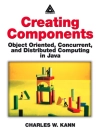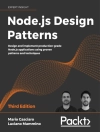The first book of its kind dedicated to the challenge of person re-identification, this text provides an in-depth, multidisciplinary discussion of recent developments and state-of-the-art methods. Features: introduces examples of robust feature representations, reviews salient feature weighting and selection mechanisms and examines the benefits of semantic attributes; describes how to segregate meaningful body parts from background clutter; examines the use of 3D depth images and contextual constraints derived from the visual appearance of a group; reviews approaches to feature transfer function and distance metric learning and discusses potential solutions to issues of data scalability and identity inference; investigates the limitations of existing benchmark datasets, presents strategies for camera topology inference and describes techniques for improving post-rank search efficiency; explores the design rationale and implementation considerations of building a practical re-identification system.
قائمة المحتويات
The Re-Identification Challenge.- Part I: Features and Representations.- Discriminative Image Descriptors for Person Re-Identification.- SDALF.- Re-Identification by Covariance Descriptors.- Attributes-Based Re-Identification.- Person Re-Identification by Attribute-Assisted Clothes Appearance.- Person Re-Identification by Articulated Appearance Matching.- One-Shot Person Re-Identification with a Consumer Depth Camera.- Group Association.- Evaluating Feature Importance for Re-Identification.- Part II: Matching and Distance Metric.- Learning Appearance Transfer for Person Re-Identification.- Mahalanobis Distance Learning for Person Re-Identification.- Dictionary-Based Domain Adaptation Methods for the Re-Identification of Faces.- From Re-Identification to Identity Inference.- Re-Identification for Improved People Tracking.- Part III: Evaluation and Application.- Benchmarking for Person Re-Identification.- Person Re-Identification.- People Search with Textual Queries about Clothing Appearance Attributes.- Large Scale Camera Topology Mapping.- Scalable Multi-Camera Tracking in a Metropolis.
عن المؤلف
Dr. Shaogang Gong is a Professor of Visual Computation in the School of Electronic Engineering and Computer Science at Queen Mary University of London, UK. His publications include the successful Springer books
Visual Analysis of Behaviour and
Video Analytics for Business Intelligence.
Dr. Marco Cristani is an Assistant Professor in the Computer Science Department at the University of Verona, Italy.
Dr. Shuicheng Yan is an Associate Professor in the Department of Electrical and Computer Engineering at the National University of Singapore.
Dr. Chen Change Loy is a Research Assistant Professor in the Department of Information Engineering at the Chinese University of Hong Kong.












